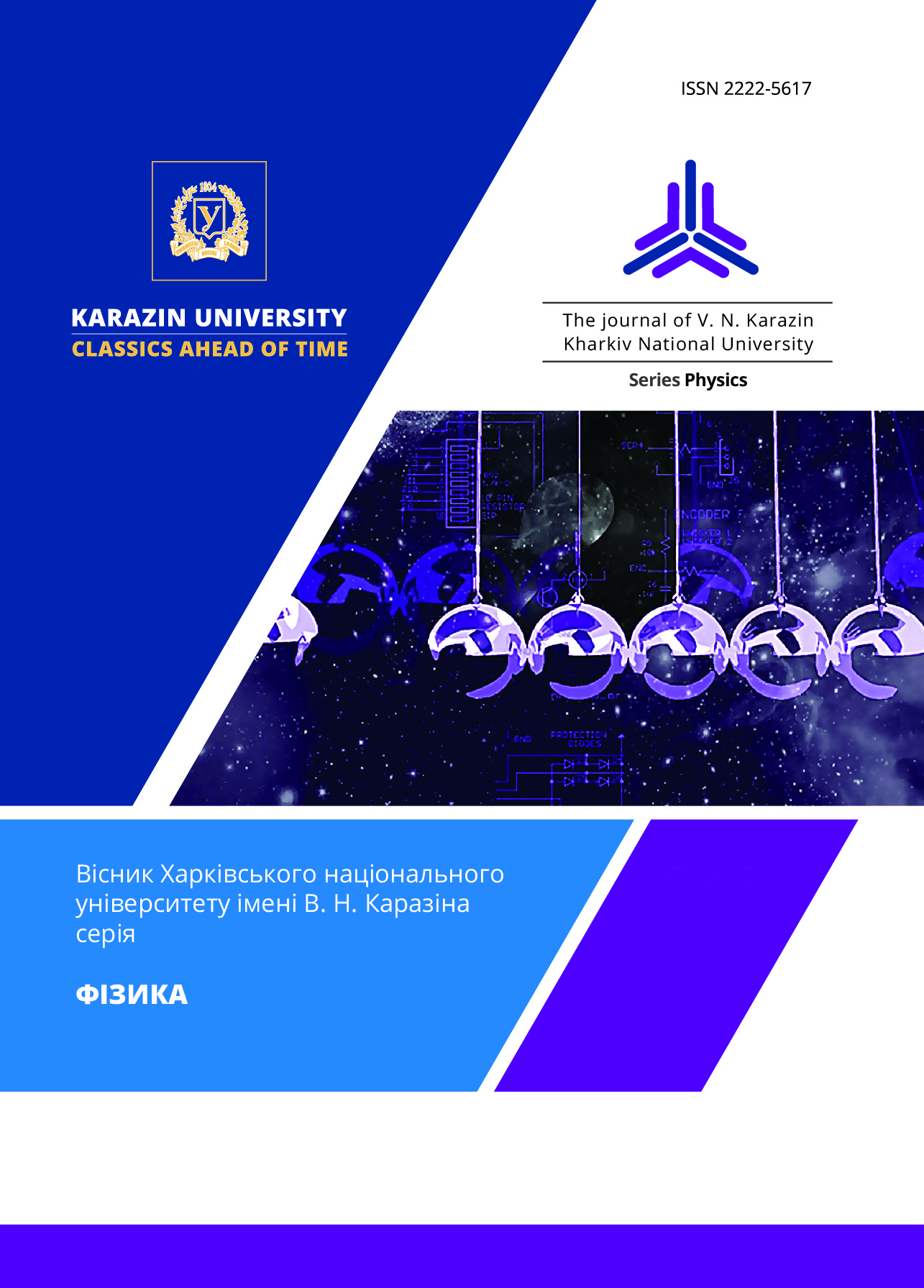Фотоіндукована «високотемпературна» надпровідність полікомпонентних метал-оксидних з'єднань
Анотація
Робота присвячена проблемі пошуку речовин, що мають надпровідність при кімнатній температурі і атмосферному тиску. У ній розвиваються уявлення в напрямку вивчення властивостей полікомпонентних метал-оксидних сполук. Основна увага приділяється дослідженням, присвяченим з'ясуванню ролі різних механізмів утворення спарених електронів в цих сполуках. Природно, що велика частина такого роду досліджень присвячена вивченню хімічної будови і кристалографічної структури метал-оксидів, оскільки саме вони визначають властивості електронної підсистеми цих речовин, що зумовлюють їхній перехід до надпровідниого стану.
Аналіз кристалографічної структури метал-оксиду YBa2Cu3O7–х призводить до висновку про те, що основну роль в процесі формування його надпровідного стану грає наявність площин CuO2, розділених відокремленими площинами, що складаються з ланцюжків CuO. Наявність хімічно різних станів однойменних пар іонів, що характеризуються різним типом зв'язку (іонним і ковалентним), а також специфічна шарувата кристалографічна структура метал-оксиду обумовлюють існування скупчень негативних U-центрів, здатних генерувати спарені електрони, що реалізують надпровідність метал-оксидних речовин.
У даній роботі обговорюється можливість інтенсифікації переходу метал-оксидних сполук до надпровідного стану в умовах опромінювання їх потоком фотонів. В цьому випадку процес формування енергетичного спектра, що допускає локальні парні переходи електронів, може бути активований (ефект внутрішньої фотоіонізації) і, таким чином, перехід метал-оксидів до надпровідного стану може здійснюватися при більш високих температурах, ніж це спостерігається за звичайних умов.
Завантаження
Посилання
J.G. Bednorz, K.A. Mueller, Z. Phys., B 64, 189, (1986). https://doi.org/10.1007/BF01303701
M.K. Wu, et al., Phys. Rev. Lett., 58, 908, (1987).
J. Bardeen, L.N. Cooper, J.R. Schrieffer, Phys. Rev., 108, 1175, (1957). https://doi.org/10.1103/PhysRev.108.1175
B. Batlog, et al., Phys. Rev. Lett., 58, 2333, (1987).
Y. Li, J. Hao, Y. Ma, J. Chem. Phys., 140, 174, (2014).
A.P. Drozdov, et al., Nature, 525, 73, (2015). https://doi.org/10.1038/nature14964
M. Somayzulu, et al., Phys. Rev. Lett., 122, 027001, (2019). https://doi.org/10.1103/PhysRevLett.122.027001
Yu.I. Boyko, V.V. Bogdanov, R.V. Vovk, Journal of V.N. Karazin Kharkiv National University, series “Physics”, 32, 10-13, (2020). https://doi.org/10.26565/2222-5617-2020-32-01
P. Strobel, J.J. Capponi, M. Marezio, Solid State Commun., 64, 513, (1987). https://doi.org/10.1016/0038-1098(87)90770-8
K. Yvon, M. Francois, Z. Phys., 76, 413, (1989). https://doi.org/10.1007/BF01307892
M. Weller et al., Phys C, 162, 953, (1989). https://doi.org/10.1016/0921-4534(89)90539-X
R. Matsunaga et al., Phys. Rev. Lett., 111, 057002, (2013). https://doi.org/10.1103/PhysRevLett.111.057002
R. Matsunaga et al., Science, 345, 1145, (2014). https://doi.org/10.1126/science.1254697
E.G. Maximov, Uspehi Phizicheskih Nauk, 170 (10), 1033, (2000). (Е.Г. Максимов, Успехи физических наук, 170 (10), 1033, (2000)). [in russian] https://doi.org/10.3367/UFNr.0170.200010a.1033
K.V. Micen, О.М. Ivanenko, UPhN, 1744 (5), 545, (2004). (К.В. Мичен, О.М. Иваненко, УФН, 1744 (5), 545, (2004)) [in russian]
R. Evans, Vvedenie v kristallohimiyu, (Goskhimizdat, Moscow, 1948), 367 p. (Р. Эванс, Введение в кристаллохимию, (Госхимиздат, Москва, 1948), 367 с.) [in russian]
H. Jaeger, S. Hofman, G. Kaiser, G. Petzow, Phys. C, 153, 133, (1988). https://doi.org/10.1016/0921-4534(88)90517-5
V.L. Ginzburg, E.G. Maksimov, Phys. C, 235-240, 193, (1994). https://doi.org/10.1016/0921-4534(94)91346-3
M.L. Cohen, S.A. Wolf, V.Z. Kresin, Novel Superconductivity, (Pl. Press, London, 1987), 1095 p.
X. Yang, et al., Nat. Photon, 13, 707, (2019).
K.V. Micen, О.М. Ivanenko, JETP, 118, 666, (2000). (К.В. Мичен, О. Иваненко, ЖЭТФ, 118, 666, (2000).) [in russian]
Yu.I. Boyko, et al., Low. Temp. Physics, 44, 63, (2018).
D. Fausti, et al., Science, 331, 189, (2011). https://doi.org/10.1126/science.1197294
L.I. Mirkin, Fizicheskie osnovy obrabotki materialov luchami lazera, (Мoscow, 1975), 304 p. (Л.И. Миркин, Физические основы обработки материалов лучами лазера, (Москва, 1975), 304 с.) [in russian]
P.А. Leont'ev, М.G. Han, N.Т. Chekalova, Lazernaya poverhnostnaya obrabotka metallov i splavov, (Metallurgiua, Мoscow, 1986), 142 p. (П.А. Леонтьев, М.Г. Хан, Н.Т. Чекалова, Лазерная поверхностная обработка металлов и сплавов, (Металлургия, Москва, 1986), 142 с.) [in russian]








3.gif)
